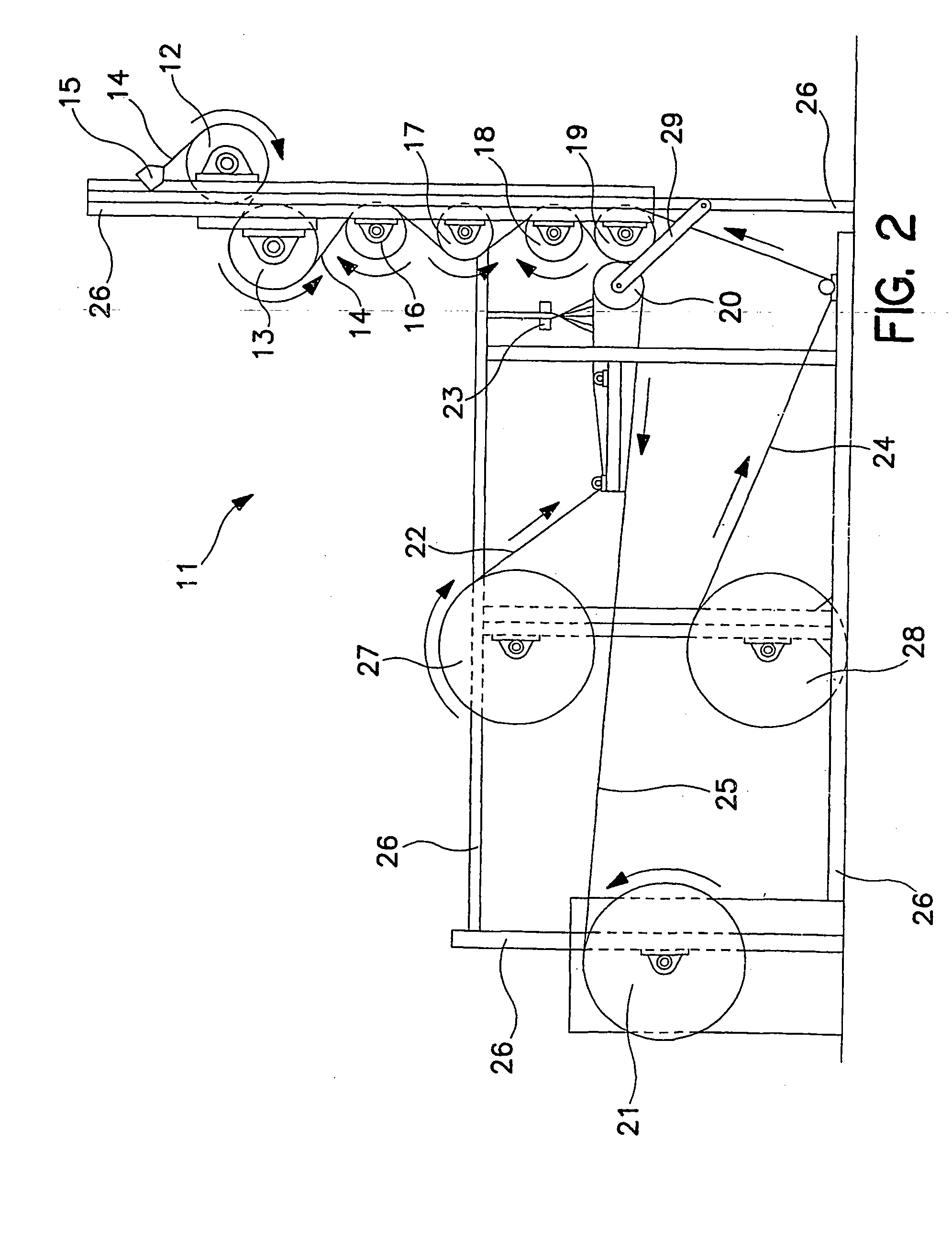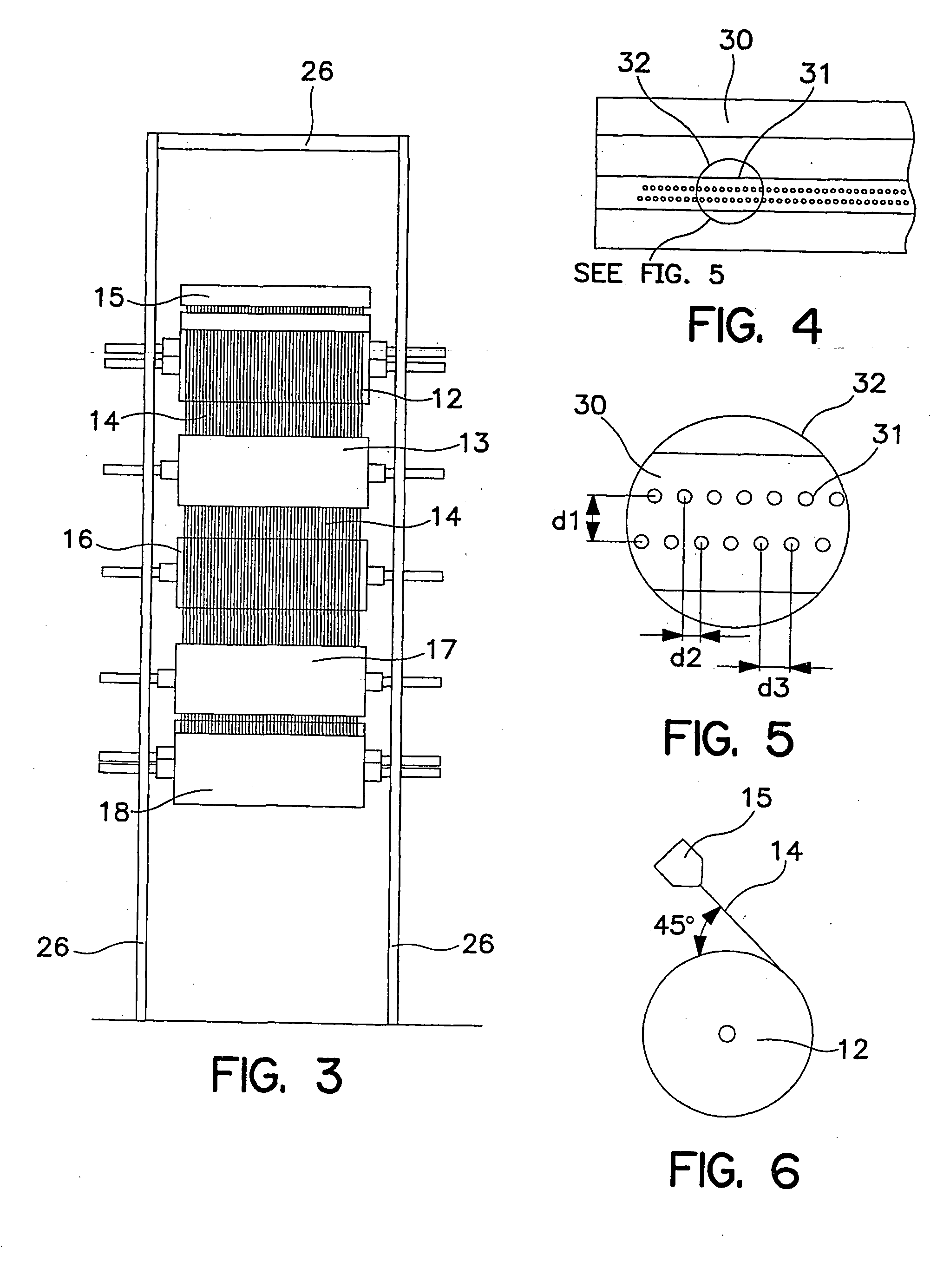Method of thermally processing elastomeric compositions and elastomeric compositions with improved processability
- Summary
- Abstract
- Description
- Claims
- Application Information
AI Technical Summary
Benefits of technology
Problems solved by technology
Method used
Image
Examples
example 1
[0075] Example 1 was formed similar to Control Example A above except that 250 parts per million of SILQUEST® PA-1 polyorganosiloxane processing aid was included in the elastomeric KRATON™ G2838 composition used to form the filaments of this Example 1. The melt temperature was about 425° F. The SILQUEST™ PA-1 polyorganosiloxane processing aid was included in the elastomeric resin as a concentrate by adding 2.5% of a concentrate consisting of 1 weight percent of SILQUEST® PA-1 polyorganosiloxane and 99 weight percent of KRATON™ G2838 elastomer.
[0076] At a throughput of 3 rpm, the melt pressure was 750 psi and filament were produced having smooth surfaces without shark skinning. No melt fracture was observed. At a throughput of 6 rpm, the melt pressure was 1,260 psi and the filaments produced had slightly fractured surfaces but were otherwise clear. At a throughput of 9 rpm, the melt pressure was 1,700 and the filaments had melt fractured surfaces. And, at a throughput of 12 rpm, the...
example 2
[0078] Example 2 was formed similar to Control Example A except that 500 parts per million of SILQUEST® PA-1 polyorganosiloxane processing aid was included in the elastic composition used to form the filaments of this Example 2. The melt temperature was about 425° F.
[0079] At a throughput of 3 rpm, the melt pressure was 800 psi and filament were produced having smooth surfaces without shark skinning. No melt fracture was observed. At a throughput of 6 rpm, the melt pressure was 1,300 psi and the filaments produced had slightly fractured surfaces but were otherwise clear. At a throughput of 12 rpm, the melt pressure was 2,140 and the filaments had melt fractured surfaces.
[0080] The peel strength of the laminate of Example 2 was 138 grams with a standard deviation of 12.
example 3
[0081] Example 3 was formed similar to Control Example A except that 1000 parts per million of SILQUEST® PA-1 polyorganosiloxane processing aid was included in the elastic composition used to form the filaments of this Example 3. The melt temperature was about 425° F.
[0082] At a throughput of 6 rpm, the melt pressure was 1,285 psi and filaments were produced having smooth surfaces without shark skinning. No melt fracture was observed. At a throughput of 9 rpm, the melt pressure was 1,740 psi and the filaments had melt fractured surfaces. At a throughput of 12 rpm, the melt pressure was 2,100 and the filaments produced had severe melt fracture.
[0083] The peel strength of the laminate of Example 3 was 103 grams with a standard deviation of 6.
PUM
| Property | Measurement | Unit |
|---|---|---|
| Percent by mass | aaaaa | aaaaa |
| Percent by mass | aaaaa | aaaaa |
| Percent by mass | aaaaa | aaaaa |
Abstract
Description
Claims
Application Information
 Login to View More
Login to View More - R&D
- Intellectual Property
- Life Sciences
- Materials
- Tech Scout
- Unparalleled Data Quality
- Higher Quality Content
- 60% Fewer Hallucinations
Browse by: Latest US Patents, China's latest patents, Technical Efficacy Thesaurus, Application Domain, Technology Topic, Popular Technical Reports.
© 2025 PatSnap. All rights reserved.Legal|Privacy policy|Modern Slavery Act Transparency Statement|Sitemap|About US| Contact US: help@patsnap.com



